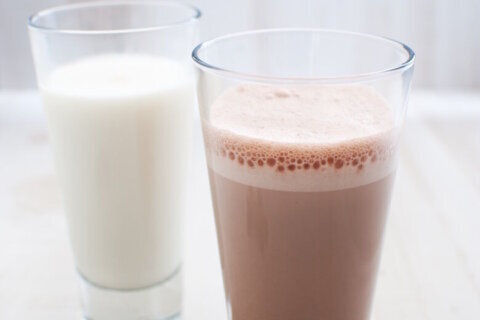Inevitably at the beginning of each year, I overhear the diet-related resolutions people make. One of the most frustrating resolutions I hear is to avoid fruit. With sugar being considered the devil of food these days, fruit is getting caught up in the sweet mess. Here’s a look at the fruit debate and why I’m a huge advocate for nature’s candy.
Is All Sugar Created equal?
I recently gave a talk at my son’s middle school where an attendee asked me to explain the difference between eating sugar from cookies versus an orange. People mistakenly assume that if sugar from a cookie is bad for you, then sugar from any food source isn’t healthy, either. But there’s more to the story that meets the eye — or, in this case, the palate.
Sugar is used as a flavor enhancer. When I taught nutrition at a culinary school in New York City, the chefs were always touting, “fat equals flavor.” In the 1990s, when fat was deemed the bad guy and removed from many packaged foods, food manufacturers needed to add flavor to these products and many turned to sugar.
But to get to the heart of the debate, you really need to look into the composition of a food and examine the nutrients the food provides. Let’s look at a serving of chocolate chip cookies versus an orange. A serving of say, Chips Ahoy, is three cookies. It provides 160 calories, 8 grams of fat, 2 1/2 grams of saturated fat and 11 grams of sugar. It also provides 6 percent of the recommended daily amount of iron.
An orange, on the other hand, is nicely packaged in its own single serve peel. It provides about 60 calories, 3 grams of fiber (13 percent of the recommended daily amount), 12 grams of sugar, vitamin C (116 percent of the recommended daily amount) and folate (10 percent of the recommended daily amount). It also contributes smaller amounts of five B vitamins, calcium, magnesium, potassium and copper. Fruits like oranges also have a high water content, which counts towards your daily fluid requirements.
Don’t Forget the Phytochemicals
Fruit is also filled with natural plant chemicals, called phytochemicals, which help fight and prevent disease. The research on phytochemicals is expanding, and there is a lot of exciting information already out there. Here’s a rundown of some of the phytochemicals found in fruit:
— Anthocyanins: One of the most potent antioxidants around, anthocyanins help protect the blood vessels and nervous system. Research has found that anthocyanins may help ward off diabetes and lower the risk of several types of cancer. Find them in blueberries, blackberries, cherries, red grapes, cranberries, pomegranates and currants.
— Lutein and Zeaxathin: These related phytochemicals may help reduce the risk of age-related macular degeneration, one of the leading causing of vision loss that occurs as we age. Both are also antioxidants and give fruit its bright, beautiful colors. Studies have found that they also may help protect against certain types of cancer. Find them in tangerines, papaya and persimmons.
— Lycopene: This antioxidant helps give some fruits their gorgeous red hue. Studies have found that lycopene can help lower the risk of heart disease, prostate cancer and macular degeneration. Studies have found that eating foods containing the phytochemical, as opposed to popping supplements, was more effective. Find it in watermelon, guava, papaya, apricots, grapefruit and mango.
The Recommendations
How much fruit should you be eating each day? According to the U.S. Department of Agriculture’s ” My Plate,” men over 18 years old and women 19 to 30 years old should eat 2 cups daily. Women over 30 can have 1 1/2 cups.
One cup of fruit is equal to:
— 1 small apple
— 1 cup of sliced or chopped fruit (raw or cooked)
— 1 large banana
— 1 medium orange
— 1 medium pear
— About 8 large strawberries
— 1 cup of 100 percent fruit juice
— 1/2 cup dried fruit
The bottom line: The whole concept of sugar needs to be put in perspective. Although fruit does contain some sugar, it also provides the body with an abundance of good-for-you nutrients that many processed foods lack.
More from U.S. News
Easiest Diets to Follow: in Pictures
Fruit: Love It or Leave It? originally appeared on usnews.com







